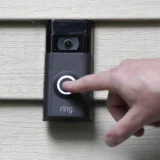With online and retail sports betting now legal in more than 30 states, the portrait of a new problem gambler is emerging: the high school student.
Although the legal age for gambling ranges from 18 to 21 depending on the state, between 60% and 80% of high school students report having gambled for money in the past year, according to the National Council on Problem Gambling. The group says the pandemic and easy access to online gambling have heightened risks for young adults.
And 4% to 6% of high schoolers are considered addicted to gambling, the group says.
“We believe that the risks for gambling addiction overall have grown 30% from 2018 to 2021, with the risk concentrated among young males 18 to 24 who are sports bettors,” said Keith Whyte, the council’s executive director, in an interview. The council is a nonprofit group that advocates for helping problem gamblers but is neutral on legalized gambling.
The percentage of high school students with a gambling problem is double that of adults, research has found. About 5% of all young people between 11 and 17 meet at least one of the criteria for a gambling problem, such as liking the rush felt when gambling, writing IOUs to stay in the game and wanting to win “the big one” so much that they keep playing even when losing a great deal.
Since the U.S. Supreme Court cleared the way to legal sports betting in 2018, states have raced to open the taps of tax revenue from the practice. Thirty states and the District of Columbia have live, legal sports betting, and five more states have live sports betting on the way.
Support for the practice has grown: About two-thirds of recently surveyed adults approved of legalizing betting on professional sports, up from 55% in 2017, according to polling from The Washington Post and the University of Maryland. However, roughly 60% of respondents said they were concerned that the increasing availability of sports betting will lead to children gambling.
But as sports betting becomes pervasive — in brick-and-mortar betting parlors and, often, for anyone with a cell phone — state gambling addiction services are underfunded, Whyte and state administrators say, and their focus is on adults.
“Kids who have problems fall through the cracks,” Whyte said.
There’s a growing recognition among state legislators and health departments that the youngest gamblers need help, but that awareness has yet to materialize into widespread gambling prevention programs for youth, according to Whyte and other experts.
“Children and young people are the fastest-growing segment of gamblers,” said Virginia Del. Sam Rasoul, a Democrat, who this year sponsored the first state law in the country requiring all public schools to teach students about the risks of gambling.
“I had some Virginia families contact me, saying, `This is a problem, what should we do about it?’” he said in an interview.
Rasoul’s law, which had nearly unanimous support in the legislature, requires the state Board of Education to develop and distribute to all school divisions educational materials on gambling as part of the existing curriculum on substance misuse. Republican Gov. Glenn Youngkin signed the measure in April.
“This is a problem that needs to be addressed,” Rasoul said. “It’s a great first step for Virginia.”
Brianne Doura-Schawohl, a lobbyist on problem gambling issues, strongly supports Virginia’s new law as a first step, but asked: “Is it going to be enough to move the needle? I’m not sure.
“What we’re not taking into account,” she said, “is the normalization in our culture of gambling, and how quickly that’s happened — practically overnight — and how that affects the kids.”
Neither the federal government nor the states battle gambling addiction like they take on alcohol, drug and tobacco addiction. Gambling is regulated by the states, and no federal agency has responsibility for prevention and treatment of problem gambling. None of the $7.6 billion in annual federal gambling tax revenue currently goes to help prevent or treat gambling addiction, according to the council.
“The vast majority of American kids never receive a focused message on the dangers of gambling addiction,” Whyte said.
In 2021, commercial gambling paid $11.69 billion in direct state and local gambling taxes, reports the American Gaming Association.
And yet, gambling prevention and treatment programs in the states are a patchwork. The 40 states that allocated any funds for gambling services in 2016 spent a total of $73 million — an average of 37 cents per capita, according to the National Association of Administrators for Disordered Gambling Services, whose members distribute the funds.
Since then, two more states have allocated funds, and a study publishing in late July by the association is expected to show a few pennies more in per capita spending for the 42 states.
Drug and alcohol addiction are seven times more prevalent than gambling addiction, but states allocate 318 times more for drug and alcohol services than for gambling services, said Linda Graves, executive director of the group.
Gambling is any game or activity in which someone risks money or something else of value in hopes of winning money — including scratch cards, lotteries, bingo, dice and card games, casino games, some internet wagering and sports betting.
“A lot of youth don’t think of gambling as a problem. They don’t think it’s a risky behavior,” said Heather Eshleman, who, as prevention manager at the Maryland Center of Excellence on Problem Gambling at the University of Maryland School of Medicine, works with teens in several community settings.
“They say the stores don’t card if they try to buy a lottery ticket. And nobody talks about it — not their doctor, not their school — they’ve never heard messages in those settings,” she said. But teens do receive a barrage of gambling ads on their phones, on TV and on the radio.
In Maryland, where mobile sports betting is expected to go live this fall, Republican state Sen. Bryan Simonaire (R-Anne Arundel) said, “We should be informing young people of the dangers.”
Simonaire, the Senate minority leader, has tried for the past three years to pass a bill authorizing the Maryland Board of Education to prepare a problem gambling curriculum that local school districts could use, if they choose, in high schools.
His first bill in 2020 would have required curriculum use, but after pushback from teachers’ groups, he made the teaching optional. His bill passed the Senate before COVID-19 upended the session. For the following two years, though, his bills have failed to get out of committee.
“The education community lobbied for casinos, to have money for education, and legislators pushed for gambling as a way to help education,” Simonaire said in an interview. “The point I made is, you got all this money, and now you have a moral obligation to inform and to teach kids to see the warning signs.”
He is also personally passionate about the issue: “My father ended up penniless because of gambling.”
His father was a millionaire who moved to Arizona and would fly to Las Vegas to gamble for fun, Simonaire said, but when a casino opened 5 miles from his home, “that’s when he had the problem. He was a wonderful person, but we all have issues in life.”
In West Virginia, Democratic state Del. Sean Hornbuckle, a professional financial adviser, tried this year to create a three-year pilot program in five public high schools to teach about problem gambling in a financial literacy class. The bill quietly died in the Republican-controlled education committee. He plans to try again, potentially with a GOP co-sponsor.
How much information youth get about gambling varies greatly, in part depending on where they live.
“We were starting to hear and see that the risk for teens with gambling disorder was high,” said Rose Blozinski, executive director of the Wisconsin Council on Problem Gambling, a nonprofit affiliated with the national council. “We thought it was better to give the information to them sooner rather than later.”
So, in 2015, the Wisconsin council developed a free, 45-minute gambling prevention class for high schools. Last year, the council created a similar video presentation for virtual schooling. About 16,500 students have seen one or both presentations.
Since 2011, North Carolina has offered the Stacked Deck program to students in about three dozen middle and high schools and community centers. Stacked Deck consists of six lessons of 30 to 45 minutes, each a week apart. Students learn about the history of gambling, probability theory and other aspects of gambling through role-playing, designing posters and producing videos with gambling prevention messages.
“Problem gambling is not a sexy topic. Teachers have to be committed,” said Amanda Winters, problem gambling administrator in the North Carolina Department of Health and Human Services.
Teachers conduct pre- and post-tests and follow up in six months. More than 9% of middle school students who participated in 2020 said their gambling had led to serious psychological, financial and legal consequences and impaired their functioning. The follow-up indicated students’ attitudes changed and they gambled less.
“We don’t want them to gamble at all, but we say, `If you’re going to gamble, gamble wisely,’” Winters said. “And know when to stop.”
This article was written by Maryland Matters, read more articles like this here.
Photo: Maryland regulators could launch mobile sports betting by fall. Photo by Danielle E. Gaines.










